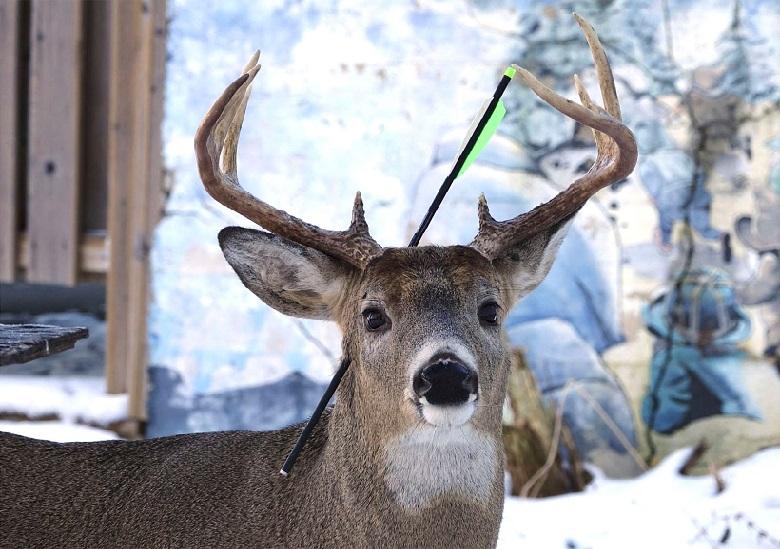It isn’t very comforting to see. Suddenly the Canadian deer named Carrot, as nature photographer Lee-Anne Carver baptized the animal, stood in front of her house with an arrow through its head. Not a hunting arrow, but one that is typically shot at targets and certainly not at deer.
Carrot is a white-tailed buck that haunts the cold north of the Canadian province of Ontario. Nature photographer Lee-Anne Carver lives there in the northwest of Kenora. “I have been photographing animals for years, but with Carrot, there is something special. He’s different from all the deer I’ve ever met”. According to Carver, Carrot even endeared himself to dogs.
For three years, Carrot, who lost his parents as a fawn, has been visiting Carver and her husband in their backyard. “He is very gentle and affectionate,” says Carver. Last week Carver’s husband saw that Carrot was injured. He came to tell the photographer, weeping.
Carver went to look and saw the black arrow with bright green plastic feathers sticking vertically through the deer’s head. “It was very distressing to see, but he was still behaving like his normal self,” says Carver. The good news: no blood and no vital organs were touched.
Carver tries to share Carrot’s sad situation with as many people as possible, hoping to save the injured deer. The animal should certainly not be killed.
Carrot doesn’t seem to care too much about the arrow. But it does bother the deer when they are sleeping and in their freedom of movement. Removing the arrow is not an option because it could cause more bodily harm and lead to the animal’s death.
This week we finally managed to sedate Carrot and shortened the arrow by half. The intention is that the shaft of the arrow will fall out of the deer’s body by itself in the coming months, with the hope that this will not make the wound worse.
Kenora has been allowing residents to shoot deer with bows and arrows within the municipal boundaries for four years now. Carver wants that law to be changed. “Carrot is not the first animal to be shot in the residential areas, but I hope it will be the last.”
